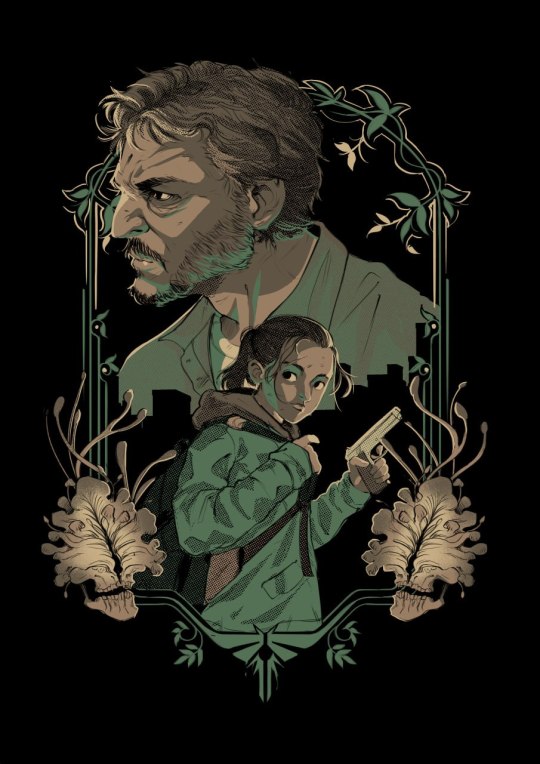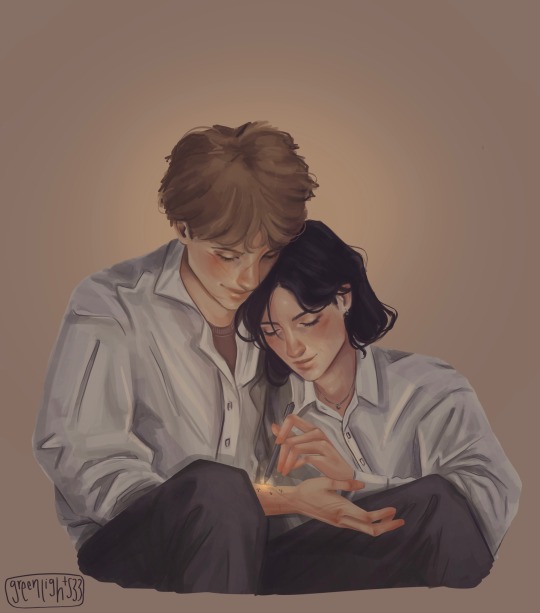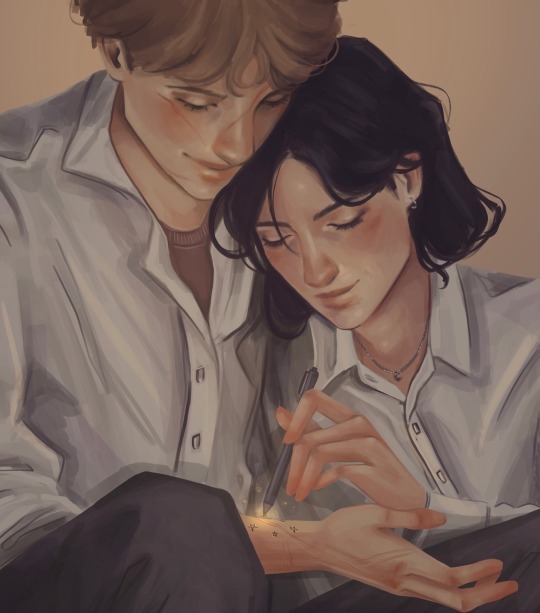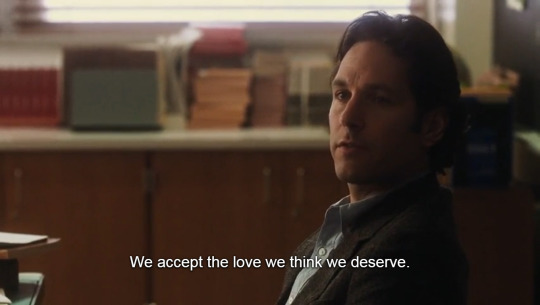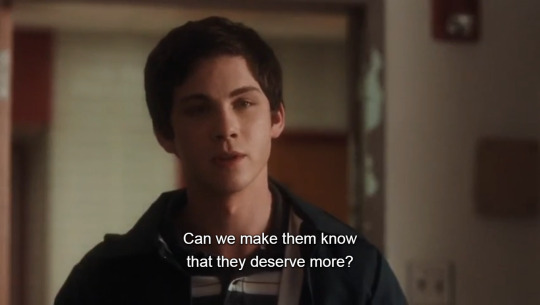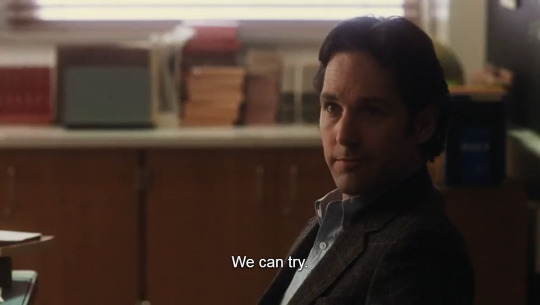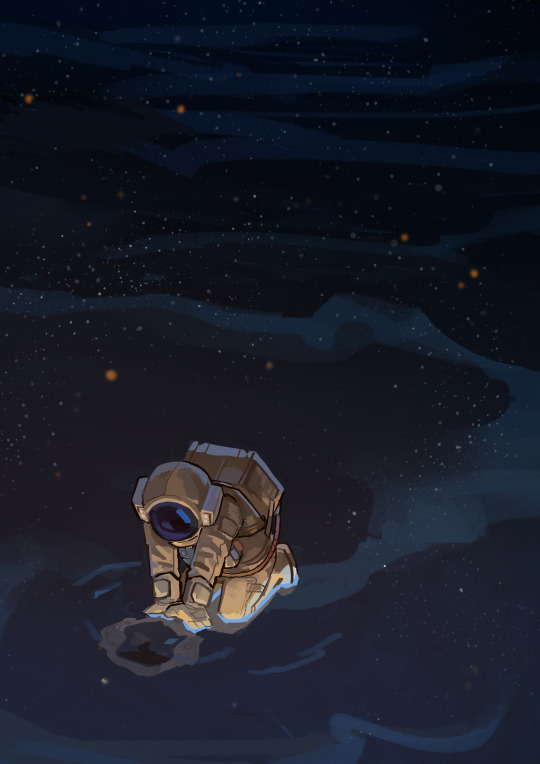Photo
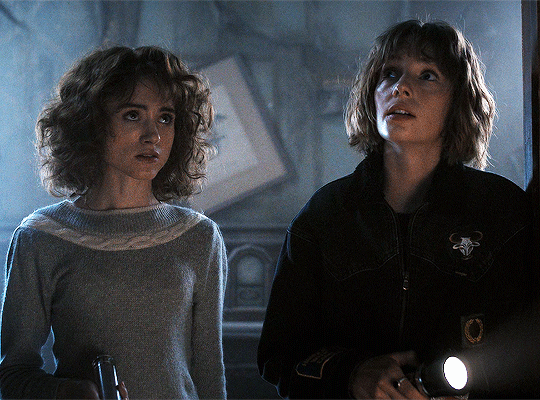

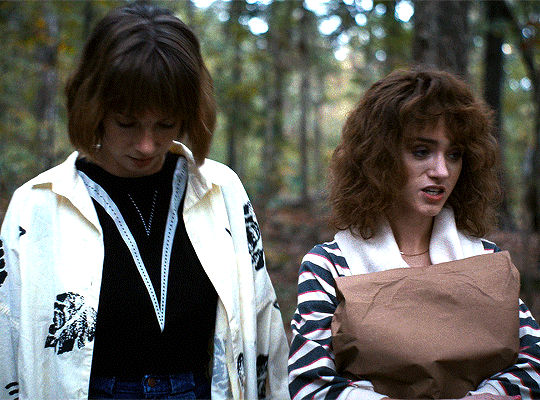
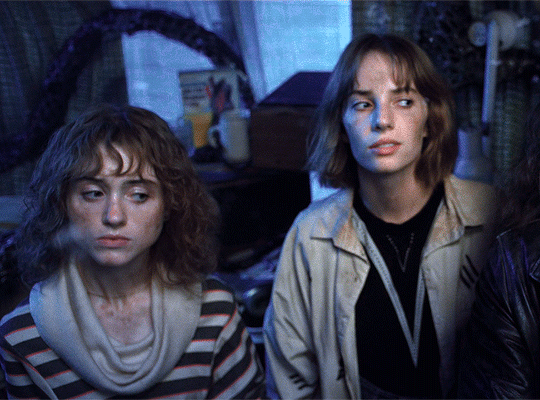


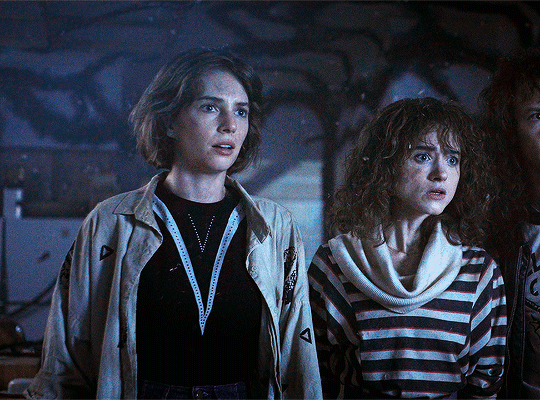


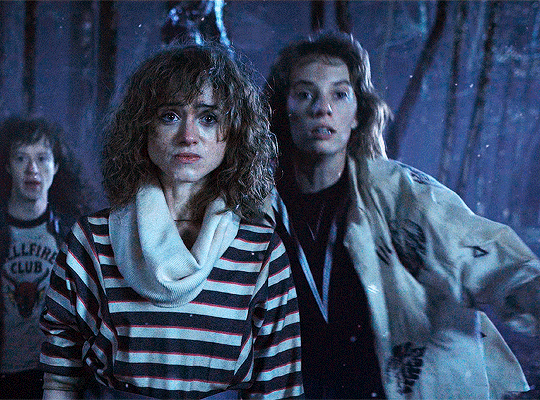
RONANCE APPRECIATION WEEK day seven: free choice / height difference
685 notes
·
View notes
Text
Different Plot/Story Structures
There are a lot of different plot structures that you can play around with when writing a story. This post is just providing some of the more common ones for you to know. While these structures are not to be adhered to completely, they can provide a good basis to get a story running and help keep it on track.
Freytag's Pyramid
Freytag's pyramid is one of the oldest and most well-known story structures. It consists of five acts: introduction, rising action, climax, falling action, and conclusion. Falling action and conclusion do not mean a decrease in intensity, but rather a shift in the plot or the stakes for the characters - aka surpassing "the point of no return." What works about this structure is its ability to heighten action in a story and introduce plot twists to make a story grip the reader.
Save the Cat
Save the Cat is a newer structure that was initially constructed for TV shows, but it works well in a larger story as well, regardless of medium. It breaks up the story into an A-plot and B-plot, shifting action between the two to balance intensity with moments for the action to cool down. Typically, the A-plot has higher stakes than the B-plot and is the main focus of the characters. What works about this structure is that it effectively utilizes side-plots to not just accompany, but enhance the main plot.
The Fichtean Curve
The Fichtean Curve is essentially a series of mini-stories that build up to a greater story, with the stakes elevating during each story. It's similar to a TV season that has several episodes, each one advancing the plot while providing a smaller story that keeps the excitement continuing. What works about the Fichtean Curve is the freedom to move non-linearly through plots, using perspectives of different characters, different settings, and different mini-plots to enhance the story.
Free-form
Free-form is exactly what it sounds like: letting your mind run free while writing your story, disregarding traditional story structures and trusting yourself. This doesn't work for everyone: in fact, I believe that almost all writers need at least a little bit of structure when writing. But mapping out a beginning and end, and letting yourself find your own path to connect the two is what works for some writers. Besides, you can always go back during editing and figure out the most efficient way to map the pieces together!
3K notes
·
View notes
Text
The Darkest Hour for your Protagonist
Also known as the “crisis” or the moment when all hope is lost for your protagonist. The Darkest Hour is when your character hits rock bottom and that “happy ending” just seems unreachable. In this scene, success for your protagonist appears impossible.
What could be a Darkest Hour?
In my opinion, you want your darkest hour to be as dark as possible. Push things to the extreme, create stakes, and hurt your protagonist.
• Not just any death, but the death of someone your protagonist loves (did your protagonist fail to save them? They now blame themselves.)
• Not just a mild injury, but a serious and life-threatening one (does this injury follow your protagonist into the end of the story? Permanently?)
• Use their fears against them (if they’re afraid of snakes, don’t just have one appear… have them fall into a pit of them.)
• Make your protagonist lose all hope and put their insecurities on full display (they’re embarrassed and ashamed in front of everyone.)
• Attack their mentality just as much as their physicality. (Betrayals, lies, deceptions, self-doubts.)
When does it happen?
Typically, the Darkest Hour occurs right before the climax. Your protagonist is at their all-time low until they have an “a-ha!” moment and gain the hope, strength, or resources to overcome their conundrum and push into the climax of the story.
How does my Protagonist overcome their crisis?
There are numerous ways that your protagonist can trudge out of the mud and gain the strength to continue fighting. They could do it independently and prove themselves a true hero, pull hope from memories and past encounters, receive aid from allies, divine intervention, etc.
Why is the Darkest Hour Important?
The Darkest Hour is vital to a character’s arc and story because, during their all-time low, their true nature is revealed. Their insecurities, flaws, and fears are all out on the table and the readers get to see them at their most vulnerable. Watching them overcome the crisis shows the reader their growth as a character.
⭐ Show the readers how much your protagonist has grown. If this crisis happened at the beginning of your story, your protagonist would NOT have been able to overcome it. Only through their growth, learning, and plot experiences… are they able to overcome it now.
⭐THIS IS WHERE YOUR PROTAGONIST CAN FINALLY SEE THEIR MISBELIEF/FLAW.
During or after your protagonist’s Darkest Hour is an amazing place for your protagonist to realize the flaw in their thinking (their misbelief).
Referring back to older posts, your protagonist needs to have a “flaw” or “misbelief”. A false way of thinking that eventually, they will realize is wrong.
• “I’ll never be good enough.” • “Magic is wrong and I will never use it.” • “All aliens are evil and need to be eliminated.”
This misbelief should have been impeding on your character through the entire plot, causing them conflict and turmoil. After fighting for survival in their darkest moment, they realize they were thinking wrong all along.
• A character reminds your protagonist that they are good enough. • Your protagonist sees magic being used to heal their allies and realizes finally that it can be used for good. • An alien saves your protagonist from a bullet and suddenly your character sees that not all aliens are bad.
Instagram: coffeebeanwriting
6K notes
·
View notes
Text
Starting Strong Scenes in Your Writing
Scenes are the fundamental building blocks of novels and short stories, and each one should propel a story toward the climax.
Generally speaking, your scene structure should mirror the story structure. In other words, take a novel-writing approach to a scene, crafting a beginning, middle, and end. Like a story, the beginning of a scene should have a strong entry hook that pulls the reader in.
Start with the setting. Often a new scene signifies a change in time and location. Establishing the setting at the top of a scene helps your readers get oriented. It also sets the tone and mood of what will unfold in the coming pages. A setting can serve as much more than a backdrop in literature. Have your scene take place somewhere that builds tension and hinders your protagonist. If you’re writing a thriller, describe a dark and foreboding place where the worst might happen. Be descriptive and use sensory details to make your setting come alive before you jump into the action.
Use visual imagery. In screenwriting, writers have to think in pictures. What images will excite an audience at the top of a scene? Your approach should be the same when writing any kind of fiction. As you write the opening of a scene, use descriptive language to engage a reader through detailed imagery. Think like a screenwriter as you’re writing scenes.
Drop the reader into the middle of the action. Hit the ground running by starting a great scene in media res. It doesn’t have to be a fight scene or a car chase, but physical movement creates momentum and builds tension in a story. It’s also a way to instantly engage a reader. Be sure you begin the scene before the high points of the action so you build up to the scene’s climax.
Write a character-driven scene opener. A good scene starts by giving characters a goal. Start by putting your protagonist in a situation that creates an obstacle or opportunity for both the scene and the overarching storyline. Try starting with dialogue, like an intense conversation between your POV character and a mystery character whose identity is revealed later in the scene. If you’re writing from an omniscient third-person point of view, consider starting a scene with a secondary character, even the antagonist, and use it as a chance for deeper character development.
Summarize past events. You might choose to use the beginning of the scene to do a quick recap of what’s brought your main character to this place and moment in time. A summary is especially helpful if you’re writing in third-person and a new scene switches to a different character. Take the opportunity to remind the reader where we left off. Instead of a straight-forward update, get creative. Go into deep POV and let a character’s thoughts provide the summary instead of the narrator. Be sure to keep this summary brief—just a line or two—so you can get back into the action.
Introduce a plot twist. The start of a new scene is a chance to pivot and take your story in a new direction. Start a new scene at a turning point in your story. Dive into a flashback or character’s backstory, revealing critical information that changes the course of the story going forward.
Keep the purpose of the scene in mind. Effective scenes are clear about what they set out to accomplish and how they contribute to the overall plot. They might include plot points or reveal important information needed to move a story forward. Establish your scene’s intention from the very first word and keep the rest of the scene on point.
Rewrite until you’ve found the perfect scene opening. When you’ve finished the first draft of a scene, go back and read it through. If your scene needs something, but you can’t figure out what, it might be how the scene starts. The best way to know if your opening works is by reading how it plays with the rest of the scene. Review the last paragraph and see if it ties back to your beginning. If the intro feels weak, rewrite it. Maybe your real opener is hidden in plain sight somewhere else in the body of the scene.
Make sure your opening scene is your strongest. While your entire book should be filled with compelling scenes that start strong, the very first scene of your book needs to lead the pack. This is the reader’s introduction to your story and where you’re revealing the characters, the setting, and kicking off the plotline with the inciting incident. This first scene has to hook the reader from the first line so they keep turning the pages.
Read a lot of books. If this is your first novel and you need some inspiration and ideas to help you start off your scenes, start by reading other books. Choose a book by a bestselling writer like Dan Brown or Margaret Atwood. Study the different ways they approach every scene. Reading other authors is a great way to hone your scene-writing skills.
Follow like and reblog if you find these helpful!
6K notes
·
View notes
Text
How to Write Compelling Character Backstories: Step-by-Step Guide
Hello, everyone! Happy Day! Hopefully everyone is ready for the weekend!
I don’t have much of an intro so, let’s get to it.
What Is a Character Backstory?
A backstory is a comprehensive overview of a character’s history that extends beyond the story in which the character appears.
Devising backstories is a crucial part of character creation since a character’s background will inform the action of the main narrative.
Writing character backstories can be part of the worldbuilding process. It’s a way to create fully formed characters who resemble real people with nuanced personality traits.
How to Write Compelling Backstories for Your Characters
Backstories are essential to creating memorable, authentic characters in your writing. Here are some tips to help you write compelling backstories:
Build a timeline of your character’s life events. Plotting out the key events in your character’s past can help you better understand your character’s personality and point of view. What were they like at a young age? What was their high school experience like? Did they have a best friend? When was the first time they fell in love? Continue plotting out these key events until you reach the present day. Not only will this exercise help you better understand your character’s thoughts, personality, and quirks, it will also give you a bird’s eye view of the formative events in your character’s life.
Make sure backstory details are relevant. When writing backstory for a new character, it can be tempting to include every bit of personal history that seems funny or interesting. However, focus on backstory that directly informs the plot points and conflicts that your character experiences in the main story. For example, if your main character’s best friend dies in your novel or short story, backstory that explains the depth of their friendship will deepen the emotional stakes. On the other hand, backstory that explores your character’s favorite food or an adventuring trip they took with their parents will feel like a waste of time, since it does not connect to your character’s present emotional reality.
Draw inspiration from real life. Writing a believable character backstory can be difficult. That’s why it’s helpful to draw inspiration from real life. Think about the way you recount formative events in your own life. Pay attention to the way your friends and loved ones tell stories. Read biographies of celebrities, politicians, or historical figures to understand the important episodes that shaped their lives. Taking note of real peoples’ backstories will make your character’s backstory seem all the more authentic and genuine.
Show, don’t tell. When weaving details from your character’s backstory into the text of your novel or short story, it’s important to avoid info-dumps. Too much backstory at once can cause the reader to become bored, which is why it’s important to vary the way in which a character’s past is revealed. Show, don’t tell is a writing technique in which a character’s personal history is revealed through actions, sensory details, or emotions. In other words, the author attempts to “show you” what happened rather than simply telling you what happened. Revealing your main character’s past life through tangible details and flashbacks can help the reader gain insight into the character’s background without relying on info-dumping.
Don’t overload your first chapter with backstory. When writing the first draft of a novel, it can be tempting to try to get all of your character’s backstory out of the way at the beginning. However, frontloading your novel with backstory and exposition will likely cause the reader to get bored since backstory often gets in the way of plotting, conflict, and organic character development. Try to spread out your backstory over the course of the whole story, deploying information as it becomes relevant to that character’s current situation.
There you have it folks, a quick and short post! Have a wonderful day everyone!
Please like, comment, reblog and follow!
2K notes
·
View notes
Text

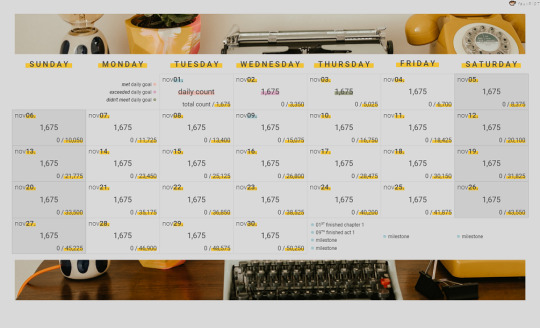

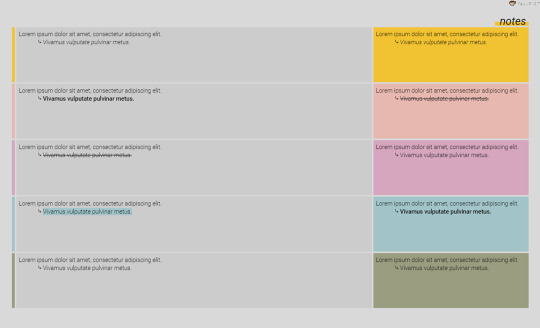
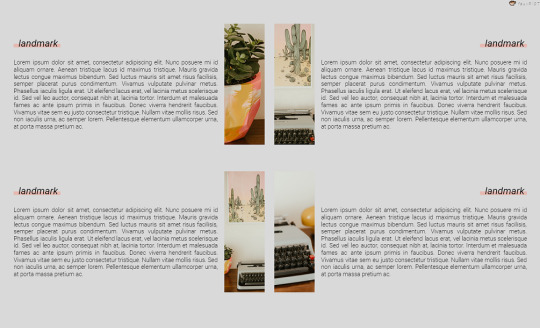
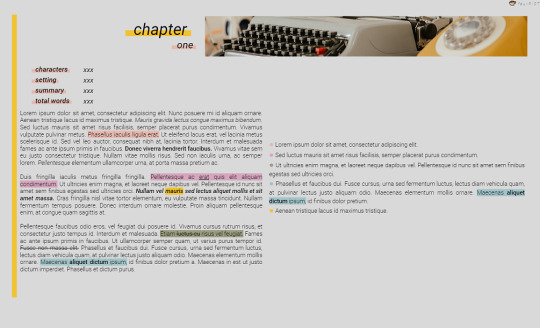

007. first draft | (download now)
First Draft is a story outlining template meant to help with planning your next big writing project or your next NaNoWriMo (National Novel Writing Month). I know, as of posting this, there's less than a week to spare before NaNoWriMo '22, but I hope this finds the right people in time, and that it can be helpful! I LOVED making this template and adore the imagery/colours, but I would love to see how people customize this to fit their own projects! This template is FREE, so PLEASE consider reblogging so that fellow NaNo'ers can find it!!
INCLUDED This is a semi-in-depth template with 6 unique Landscape-Format pages. • Synopsis/Intro. • NaNoWriMo Word Count Calendar. (The calendar is set for November 2022, but with some table know-how you could edit it for whatever month you need!) • Character/Worldbuilding Descriptions. • Notes. • Chapter Outlines. • A Timeline of Events. There are detailed instructions on how to edit the timeline yourself, but you can also delete the page if you want.
HOW TO USE/EDIT • When you gain access to the doc, use “File > Make a Copy” • Do NOT remove the credit/links on the pages. • To replace images, click on each image separately and select "Replace Image." • The colour palette can be entirely customized, as it's all just highlights. • There are instructions on how to duplicate pages and how to use the Timeline page.
ETC . . . • Feel free to contact me if you have questions or need help! • I sometimes stream the creation process of these templates on Twitch and would love if you dropped by! • Likes are lovely, but reblogs go far here, so please consider sharing! • Find more info in my pinned post or about page!
1K notes
·
View notes
Text
Tips on Pacing
We, as creators, seek that hook that gets the readers invested and keeps them that way. Nothing does that better than tension. There are all kinds, but it often occurs between characters. The "do they like me" of romance, the interruptions of erotica, the intense adversary from an unknown opponent, or the whodunits of mystery; Tension comes in all shapes and sizes, but it boils down to one thing, leaving the readers holding their breath in anticipation of the next page.
A large part of the creative process is figuring out how to create that tension without leaving the readers wanting to quit out of frustration or confusion. I would like to say there is a correct way to pace things, but it depends entirely on the story and situation.
Action scenes, for example, move very quickly, whereas a scene with a lot of dialogue will move at a snail’s pace. A spicy scene will emulate real life, moving slowly at first and increase its pace. A dramatic scene can be either fast or slow, depending on what it contains.
There are the peaceful scenes that do not move the same as any other kind of scene, showing the contentment of characters, the sun setting, or moving from one place to another. In writing or showing these scenes in a comic, it will go very quickly but the reader will perceive them as slow.
Showing a car ride, or a cooking scene allows characters to reflect on what has been happening and offers character development, but it does not have that tension at all. Still, adding those scenes is like adding bread to your butter. Now, everyone has their own tastes, but I would find it very odd to find someone who would consume just butter, especially if it was unsalted. Adding those peaceful scenes makes the ones that aren’t, all the more impactful, to both your readers and your characters.
The calm before the storm does wonders in storytelling, but the one thing you want to avoid is spending too much time in that calm. An example of this would be The Hobbit. Now, I love The Hobbit. It’s a classic hero’s journey, with a deep world build and rich characters, but parts of it are unnecessarily wordy. There is a page that describes the moss on the trees in such detail that you can taste it, which shows Tolkien’s skills as a wordsmith, but it was ultimately padding.
waits for the rage. Padding; words that don’t move your plot forward and only add to your word/panel count. Padding or filler should not be confused with peaceful scenes. Peaceful scenes will add to your story, padding will not. The literary world has changed a lot since Tolkien wrote The Hobbit, and we can see that evident in modern literature by the fact that there would hardly be a mention of trees at all, let alone the moss that grows upon them.
The next subject of pacing is sentence variation and flow. Now, flow is a tricky subject, and is not often resolved during the initial draft. When I am editing, things will sometimes be in the wrong order and disrupt flow. When flow is off, tension wanes, and when tension wanes, readers will lose interest. There may be entire scenes that I think don’t work where they are, but rather than delete those scenes, I find a place where they fit better. Perhaps that place is earlier, perhaps it is later. If you thought that scene was necessary when you wrote it, perhaps there is a proper place for it.
In A Galactic Star, the episode titled Repercussions, was supposed to happen right before the climax. I moved it up to allow the reader to understand Chrome’s hesitations between him and Neon.
Even in comics, you aren’t going to necessarily catch things after you just completed them. Many indie creators will recommend a space between writing the initial draft and editing it. The amount of time varies per person, but it is suggested to at least give it a day. The reason is because of the completion high; You just created this thing and in your mind it is amazing and awesome, not seeing the mistakes that are there. I feel as though editing is like polishing a stone; Every stone, no matter how grey or plain in appearance, can be polished into a stunning masterpiece if given enough time.
The editing process has multiple phases, the first is checking for spelling and grammar mistakes, and the second is checking the sentence structure for flow. Example: The loud dog barked. Vs. The dog barked loudly. The first is grammatically correct but makes you pause to process, whereas the second will allow you to move on to the next sentence without that stop.
Flow is a key component in pacing, which is a key component in tension, which keeps your readers engaged. As a potential reader of your story, I hope this will help you to bring it to life.
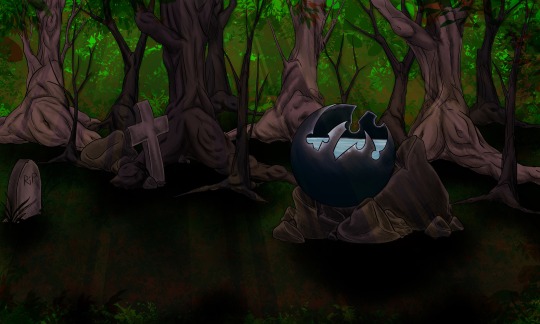
761 notes
·
View notes
Text
Writing With Folklore Blog Directory
Looking for something specific? This list is updated periodically with every post I’ve ever made! Start here if you’re looking for…
Characterization/Development
2 Alternate Character Creation Techniques
Character Creation with Tarot
Character is Plot
Characters Contradict
Creating and Using a Logline
Subtext: What We’re Not Saying
The Past, Present, and Future of Your Character (Tarot)
There’s no Such Thing as Fluff
Troubleshooting Your Dialogue
Voice is What They Say, Not How they Say It
Why is Your Antagonist the Antagonist
You Only Get One Character Introduction
Plotting
Finish Your Drafts
Motifs and Throughlines
Should I Edit or Rewrite?
Stick to your Twist
The Last Chapter
Troubleshooting your Plot
Your Plot will Always have Holes
Outlining
Finding your Title
Master Planning Checklist
My Favourite Chapter Titles from my Projects
Outlining Part 1
Outlining Part 2
Outlining the Short Story
Theme is not a Question
What Happens Next
You Don’t Need to Write Chronologically
Worldbuilding
10 Questions to Ask About your World
Building your World
Throw Out your Details
Writing Prophesy
Theory
Beginner’s Luck (The illusion of a perfect first draft)
Camera as Narrator
Expanding on the Narrator
Experiencing and Writing
How to Sentence Structure
Maintaining a Writing Schedule
Read it Out loud!
When Writing Needs Therapy
Why Screenwriting is a Good Model for Novel Writing
Writing is Feeling
Writing Requires Fuel
Zoom in
Misc. Writing Advice
Don’t Write What You Know, Write Genuinely
Forget Clarity of Description
Grave Tending
Keeping Secrets is Risky Business
Movement Kills Pacing
Nailing Your Pacing and Rhythm
Passage of Time
Sentence Structure Ask
Suspension of Disbelief
Trust your Readers
Writing about Sensitive Subjects
Writing about the Holidays
Writing a Universal Story
Writing with Intention
Prompts
Character, Prop, Situation
Exploring Humanity
Musical Writing
Now They Meet
Secrets
Sparking an Idea
There’s Magic in Cities Too
Write Without your Vices
Folklore
Banshee
Bigfoot
Doppelganger
Fairy Tale: The Sleeping Beauty in the Wood
Gargoyles
Gnomes
Goatman
Golem
Griffin
Kelpie
Krampus
Leprechaun
Loch Ness Monster
Mothman
Phoenix
The Bray Road Beast
The Headless Templar
The Jersey Devil
Will-o’-the-Wisp
NaNoWriMo
Developing your Nano Protagonist
Finding Your Nano Idea
Outlining your Nano Project
Setting a Custom Nanowrimo Goal
Inspiration
Alienation and Creating
Art Requires Vulnerability
Carry a Journal
Discovering Your Weird Brain
Do you Diary
Facing the Blank Page
Happy New Years! (eve)
I’m Still Writing Despite Everything
Is your Idea Original?
Looking Forward to Looking Forward
Mental Illness and Creating
What Makes you Wonderful?
Why I write
2K notes
·
View notes
Text
WEBSITES FOR WRITERS {masterpost}
E.A. Deverell - FREE worksheets (characters, world building, narrator, etc.) and paid courses;
Hiveword - Helps to research any topic to write about (has other resources, too);
BetaBooks - Share your draft with your beta reader (can be more than one), and see where they stopped reading, their comments, etc.;
Charlotte Dillon - Research links;
Writing realistic injuries - The title is pretty self-explanatory: while writing about an injury, take a look at this useful website;
One Stop for Writers - You guys... this website has literally everything we need: a) Description thesaurus collection, b) Character builder, c) Story maps, d) Scene maps & timelines, e) World building surveys, f) Worksheets, f) Tutorials, and much more! Although it has a paid plan ($90/year | $50/6 months | $9/month), you can still get a 2-week FREE trial;
One Stop for Writers Roadmap - It has many tips for you, divided into three different topics: a) How to plan a story, b) How to write a story, c) How to revise a story. The best thing about this? It's FREE!
Story Structure Database - The Story Structure Database is an archive of books and movies, recording all their major plot points;
National Centre for Writing - FREE worksheets and writing courses. Has also paid courses;
Penguin Random House - Has some writing contests and great opportunities;
Crime Reads - Get inspired before writing a crime scene;
The Creative Academy for Writers - "Writers helping writers along every step of the path to publication." It's FREE and has ZOOM writing rooms;
Reedsy - "A trusted place to learn how to successfully publish your book" It has many tips, and tools (generators), contests, prompts lists, etc. FREE;
QueryTracker - Find agents for your books (personally, I've never used this before, but I thought I should feature it here);
Pacemaker - Track your goals (example: Write 50K words - then, everytime you write, you track the number of the words, and it will make a graphic for you with your progress). It's FREE but has a paid plan;
Save the Cat! - The blog of the most known storytelling method. You can find posts, sheets, a software (student discount - 70%), and other things;
I hope this is helpful for you!
(Also, check my gumroad store if you want to!)
80K notes
·
View notes
Text
Writers, it's okay:
to be proud of your own writing
to write something self-indulgent
to celebrate your achievements
to have a bad day of writing
to hype up your own writing
to be kind to your characters once in a while. ok? it's ok
11K notes
·
View notes
Text
Why your story matters:
Because you wrote it. And that's all it takes for it to matter. It is not about skill or popularity. It's about your love for writing.
5K notes
·
View notes
Text
“Try to read your own work as a stranger would read it, or even better, as an enemy would.”
— Zadie Smith
313 notes
·
View notes
